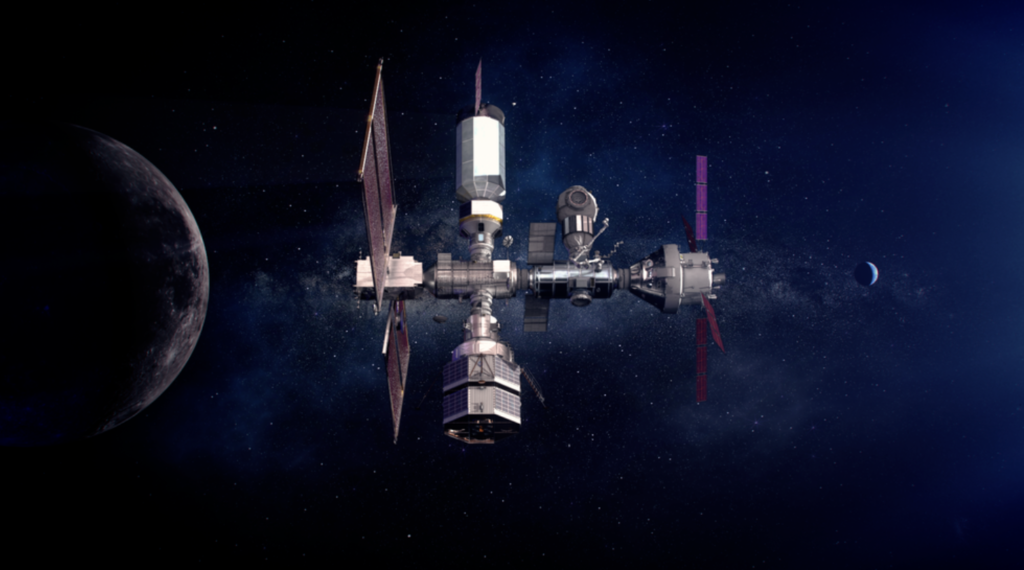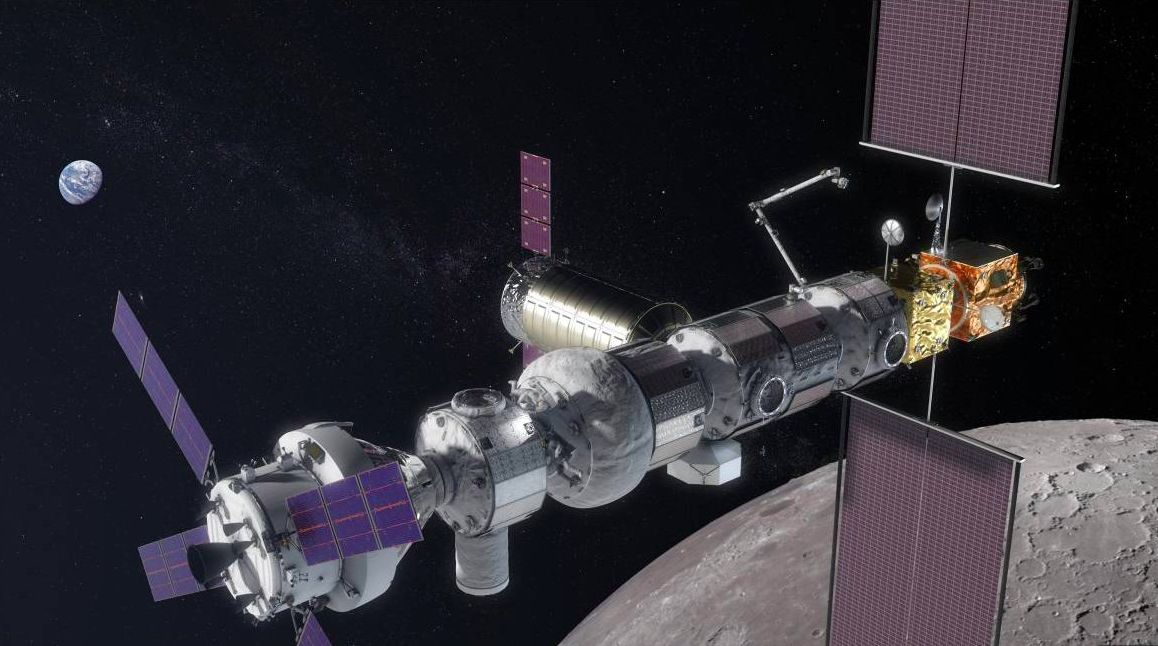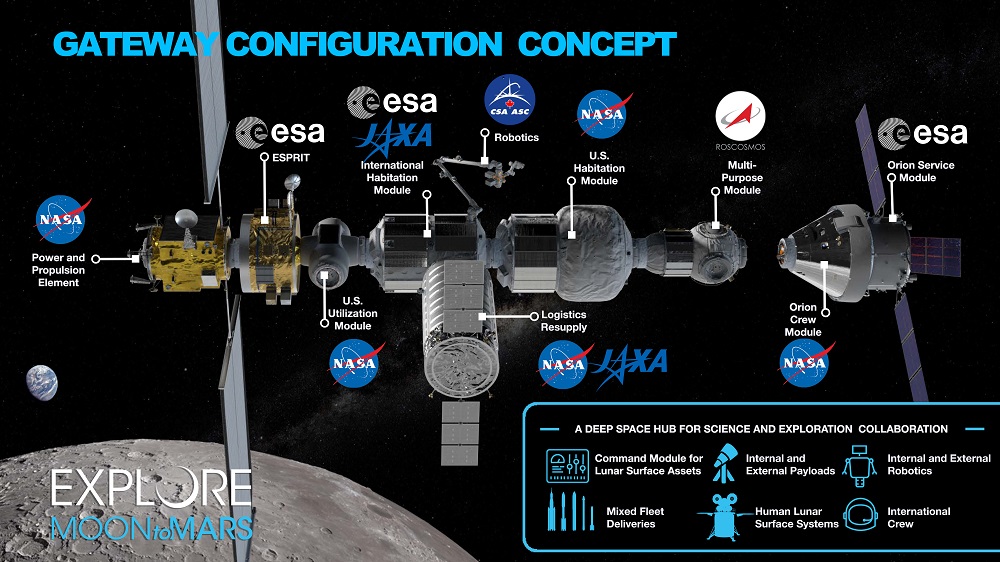
Why Does NASA Want To Build A Moon Space Station?
NASA has been working on the Artemis mission for quite a while now. Specifically, the agency has been developing the Space Launch System and working with different private companies for a Moon lunar lander. All of this is contributing towards the goal of setting up a more permanent human presence on the Moon. However, NASA is also planning on creating a Moon space station named Gateway.
NASA is planning to construct a Moon space station named Gateway for multiple reasons. Some of the most important include setting up a strong communication relay, facilitating multiple human missions on the Moon at the same time, and enabling ongoing science to be conducted. All of which support the plan to construct the first every lunar space station.
If NASA wants to build a large base on the Moon and consistently transport humans on and off the celestial body, a lunar space station will help a lot. While it has never been done before Gateway will help unlock the benefits of the Moon and accelerate our progress in space.
What Is Gateway & Artemis?

Gateway is the name of the space station that NASA is planning to work on in the future for the Artemis mission. The point of the Artemis mission is to not only put humans back on the surface but also set up a more permanent residence. To do this NASA is planning on creating a Moon base along with a lunar space station. Currently, NASA has been working hard on all aspects including the SLS or Space Launch System. This is the agency’s newest launch vehicle that is meant to be one of the biggest and most powerful rockets in the world.
NASA is also working with different private companies to build equipment and hardware to help with the mission over time. Specifically, the agency picked multiple companies and groups to come up with the best lunar lander. They needed to factor in different things including cost, weight capacity, size, development time, and more. The main groups and companies involved were SpaceX, Dynetics, and Blue Origin. After looking through all the options thoroughly NASA ended up picking SpaceX and awarding the company $2.9 billion. This lunar lander is expected to use Gateway in the future and dock prior to descending onto the lunar surface.
What Are The Benefits Of A Moon Space Station?
Communication Relay – One of the first benefits of creating a Moon space station is the communication relay. At over 200,000 miles away communication between astronauts at the Moon and humans back on Earth is extremely important. Gateway will end up serving as a mobile command and service module. This is possible due to the space station providing a communications relay. When landing on the surface of the Moon it would be very difficult to set up a large and powerful communication relay. This has to do with the location and different factors such as bringing cargo down to the surface.
This is where Gateway comes in very handy. NASA along with other agencies will work together and provide different large modules. Each module will be connected and turned into a lunar space station. Prior to descending onto the surface or even when astronauts on the surface need to communicate it will go through the space station. This will speed up communications along with making them a lot more reliable. This is necessary when astronauts will be spending a lot more time on the surface in the process of creating a Moonbase.
Multiple Human Missions – Another benefit of Gateway is how it will facilitate multiple human missions. One of the core aspects of Gateway is a modular design. This means that at first, the space station will start out as a single small habitat. This habitat will have at least one but likely more sides with the ability to dock additional modules. Over time as NASA and different agencies build modules, they will be launched to the Moon and attached to the existing space station. This will eventually grow the station into a large lunar Gateway.
The modular design combined with NASA working with different agencies has the huge benefit of multiple human missions at the same time. To get to the surface of the Moon the plan is to dock to Gateway first. After docking to Gateway you can take a lunar lander that is attached to the space station down to the surface of the Moon. After your mission is over you launch back up to the space station and then head home. The modular design means this can happen at the exact same time with different agencies and missions. With the station’s ability to be expanded plenty there will be no shortage of space. The addition of multiple human missions will help increase science, progress, and much more.
Ongoing Science – Science is extremely important when looking at the Artemis mission. One of the main goals of the mission is to learn everything they can and apply that information for a future mission to Mars and beyond. Tests in space or on the surface of the Moon provide crucial information in an incredible environment. Gateway will help ensure science can always be conducted during the mission. One way is thanks to the reason I mentioned prior. With multiple human missions at the same time, it means more science that is being conducted on the surface and in general. The other way is on the station itself and the added convenience of a nearby space station. As Gateway expands and becomes even bigger a lot of science will be conducted on the station. Additionally Gateway provides the convenience of a close base that will help move and transport technology and material from the Earth to the Moon or other way around.
Moon Access – The final benefit of Gateway that I want to mention is the increased access to the Moon. While the Moon may look the same all around from far away or in pictures that is far from the case. The Moon has very different features across the surface and underground in different places. An example could be water ice that NASA scientists are very interested in finding. The agency has investigated and found water ice in different locations and craters across the Moon. This means that having access to the entire Moon for human missions is very important. Gateway will provide just that. Looking back at the Apollo missions this was not the case. Once arriving at the planet the astronauts from each mission only had access to a single orbit around the Moon. Gateway is planned to be in a unique orbit between the Moon and Earth and provide access to practically the entire Moon. This will strongly benefit possible science, research, and more during the Artemis mission.
How Will It Be Built?

Gateway will be constructed over time module by module. At first, NASA will launch a single module to the correct Moon orbit. As time goes on more will be launched and connected to the space station. It will be a very similar process to the International Space Station. It also won’t only be NASA working and providing modules for the lunar space station. Some other agencies that worked with NASA are planning to help with Gateway as well. Some of these agencies include ESA, CSA, JAXA, and Roscosmos. The addition of teamwork will help improve the quality, lower the cost, and speed up the creation of the lunar space station.
Conclusion
NASA wants to not only go back to the Moon but set up a more permanent residence. One of the ways the agency plans to do this is by creating a lunar space station named Gateway. Gateway provides a lot of different benefits such as increased communications, multiple human missions, ongoing science, and added Moon access. All of which will help NASA prepare for a future human mission to Mars and even further. NASA plans to work with different agencies similar to the ISS and create the lunar space station. We will have to wait and see what NASA plans and the progress on Gateway.
